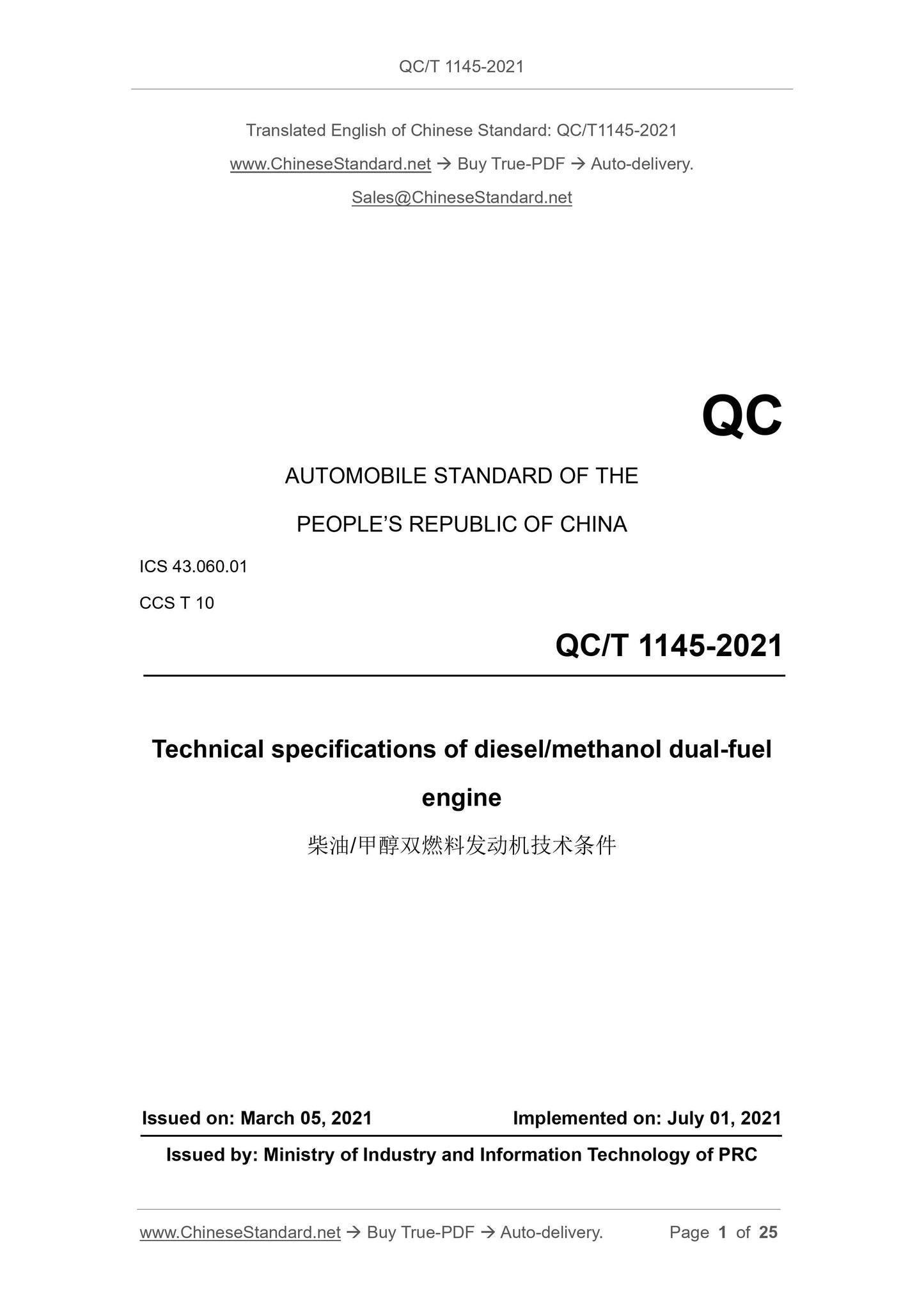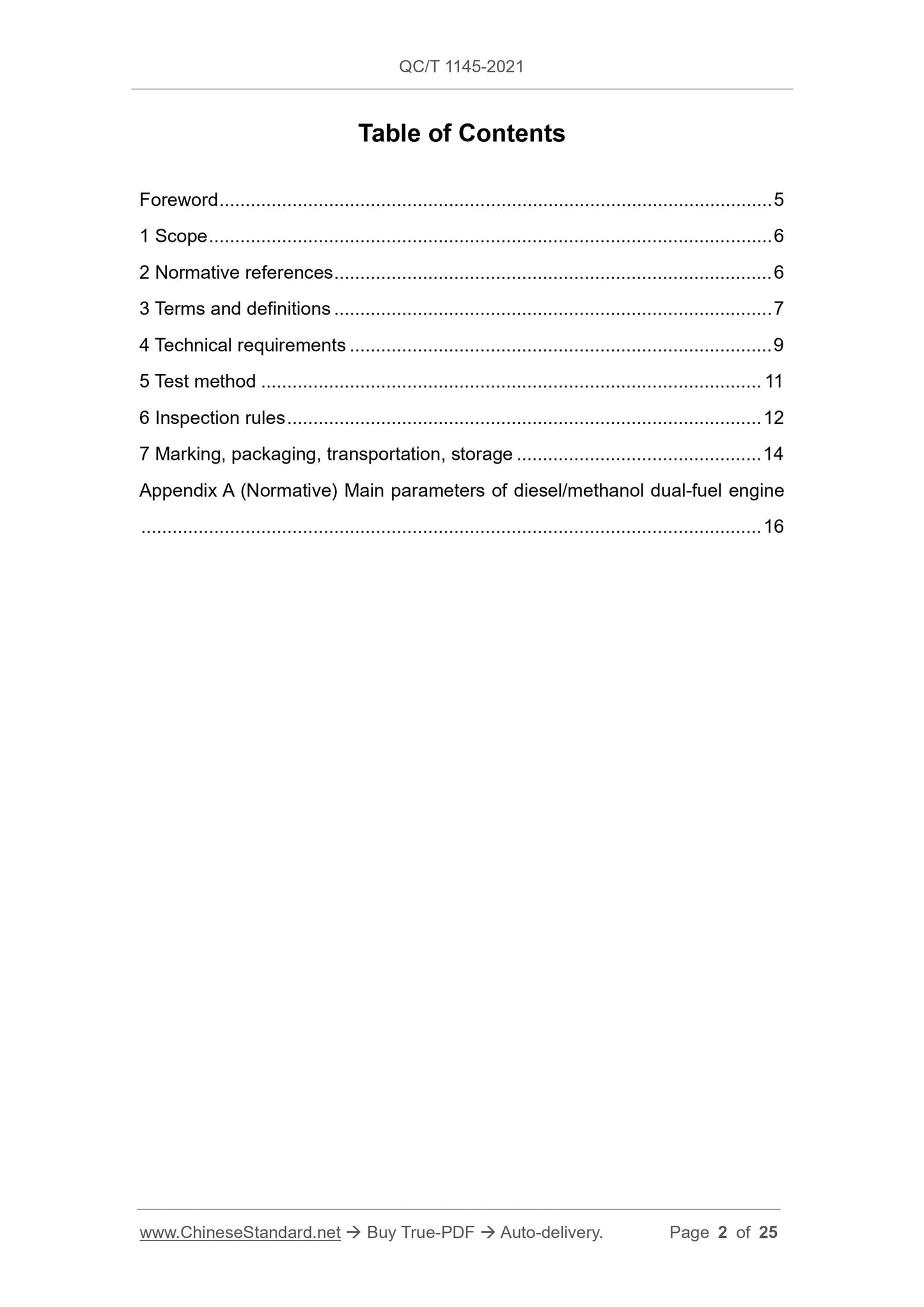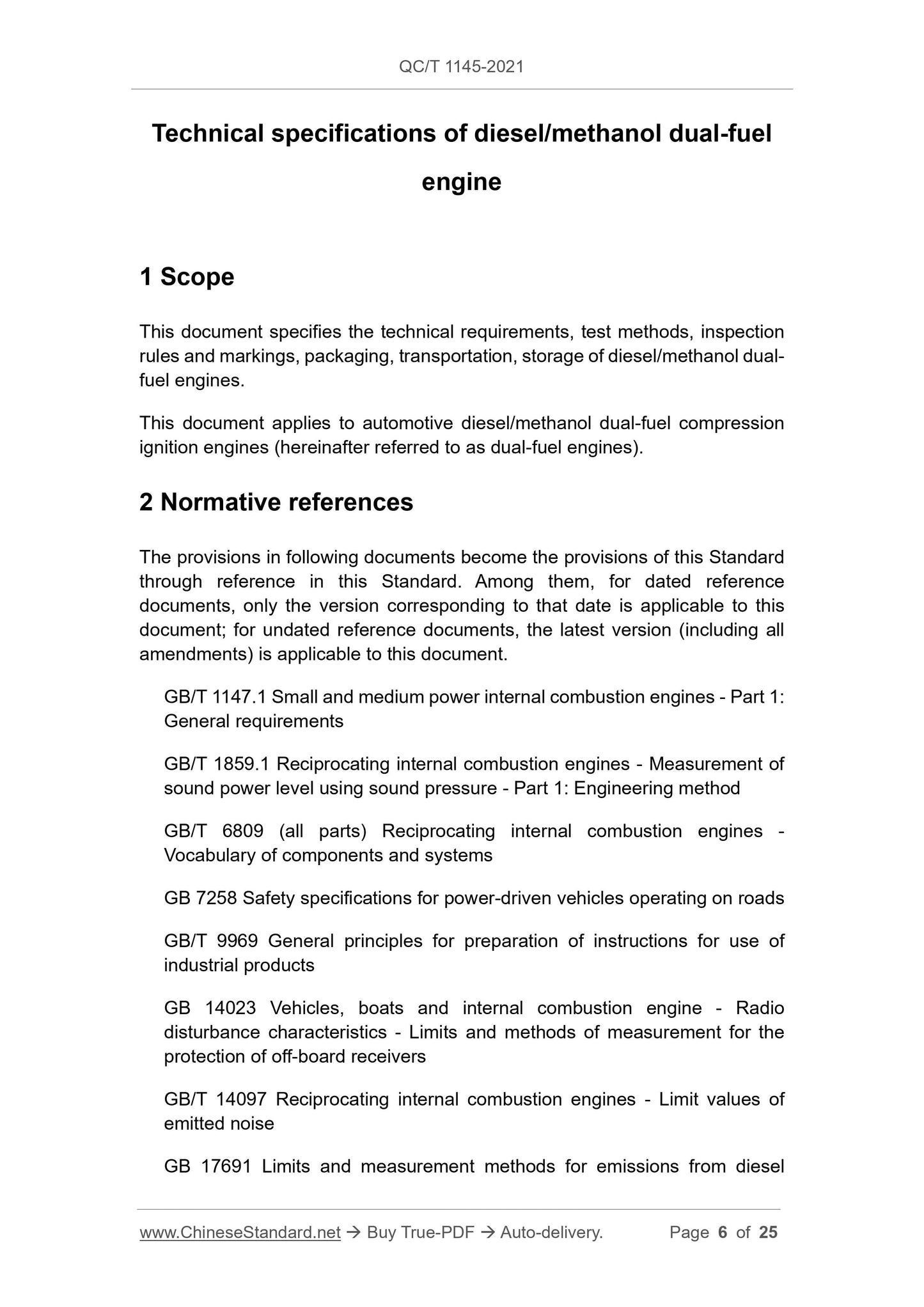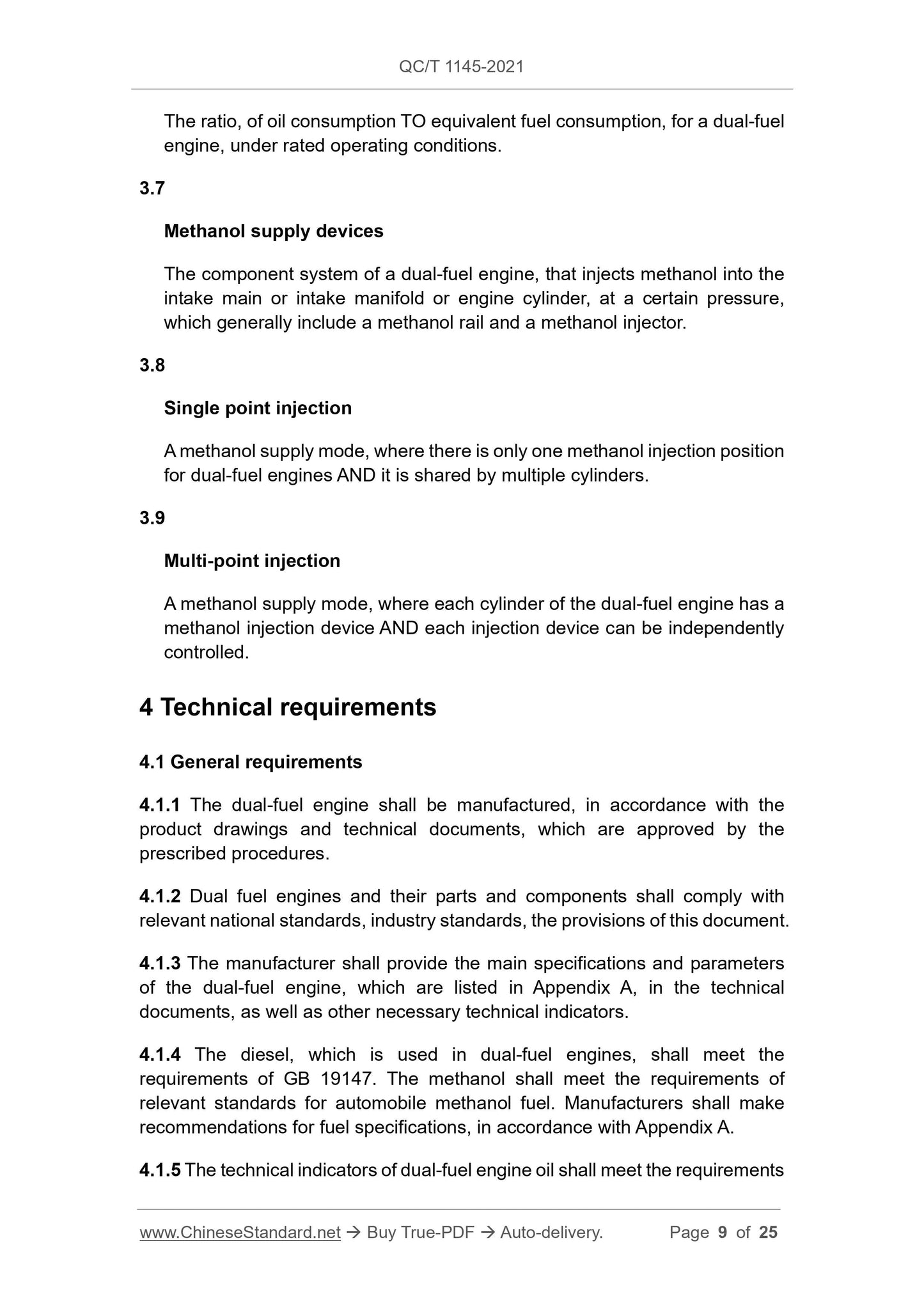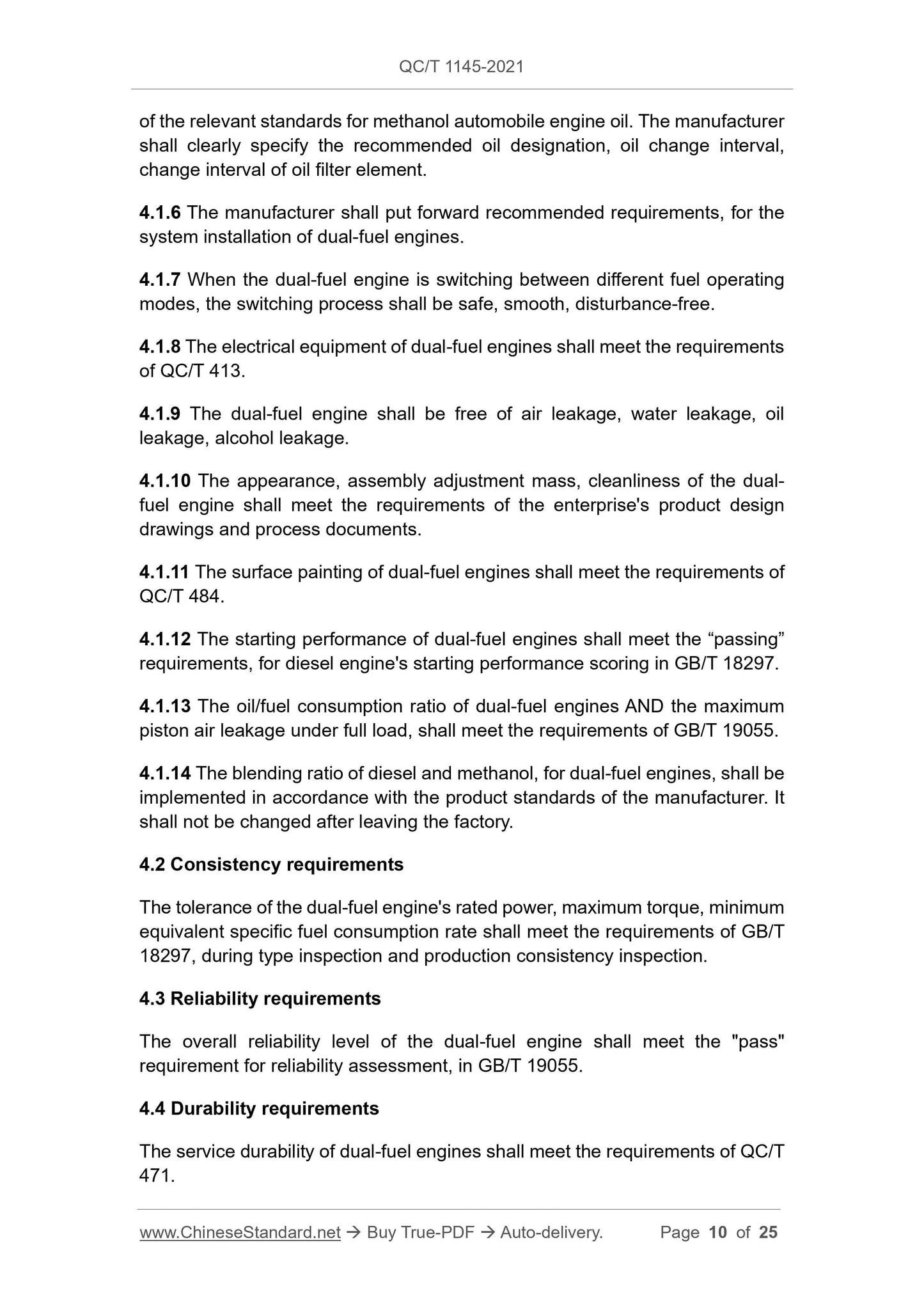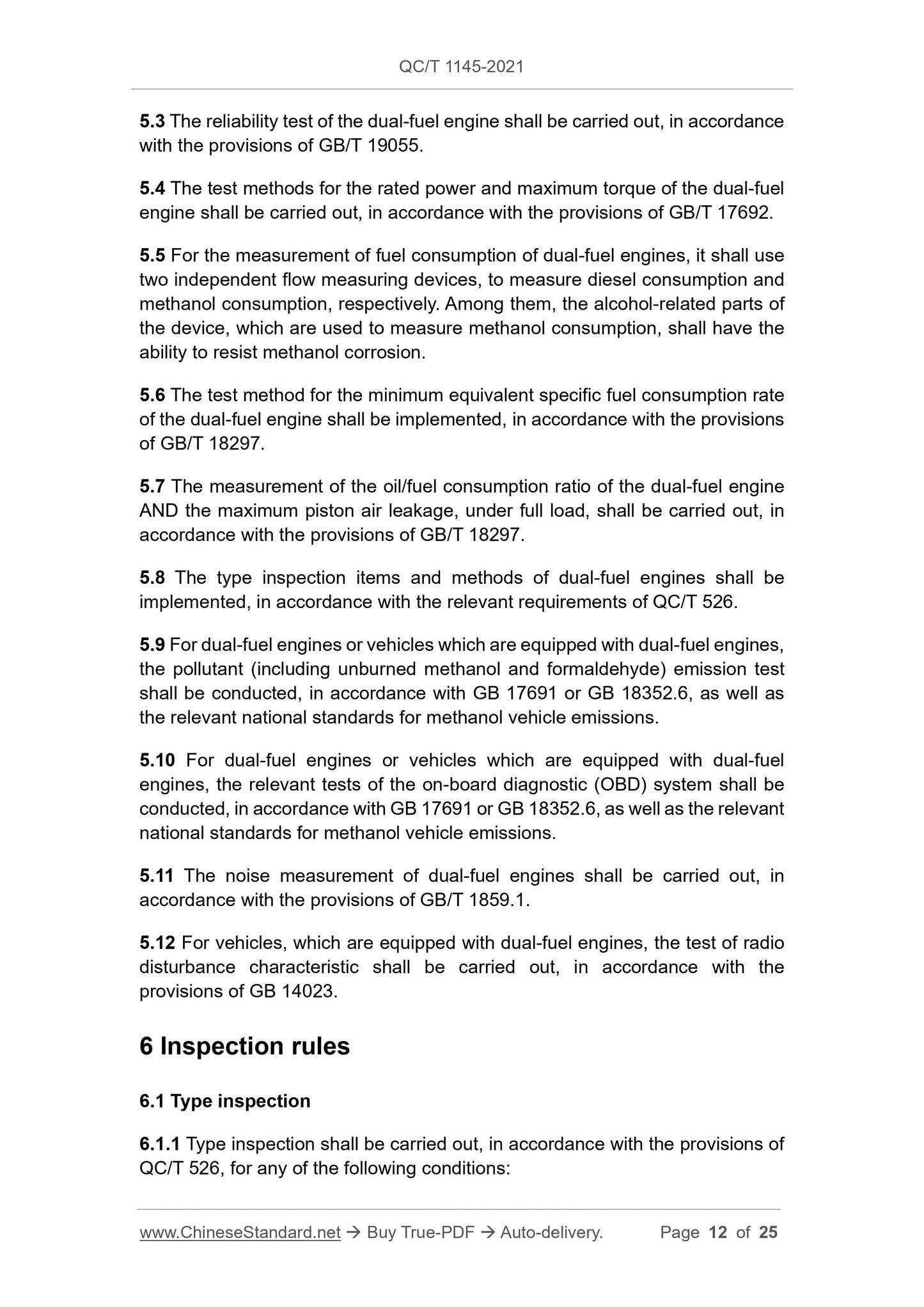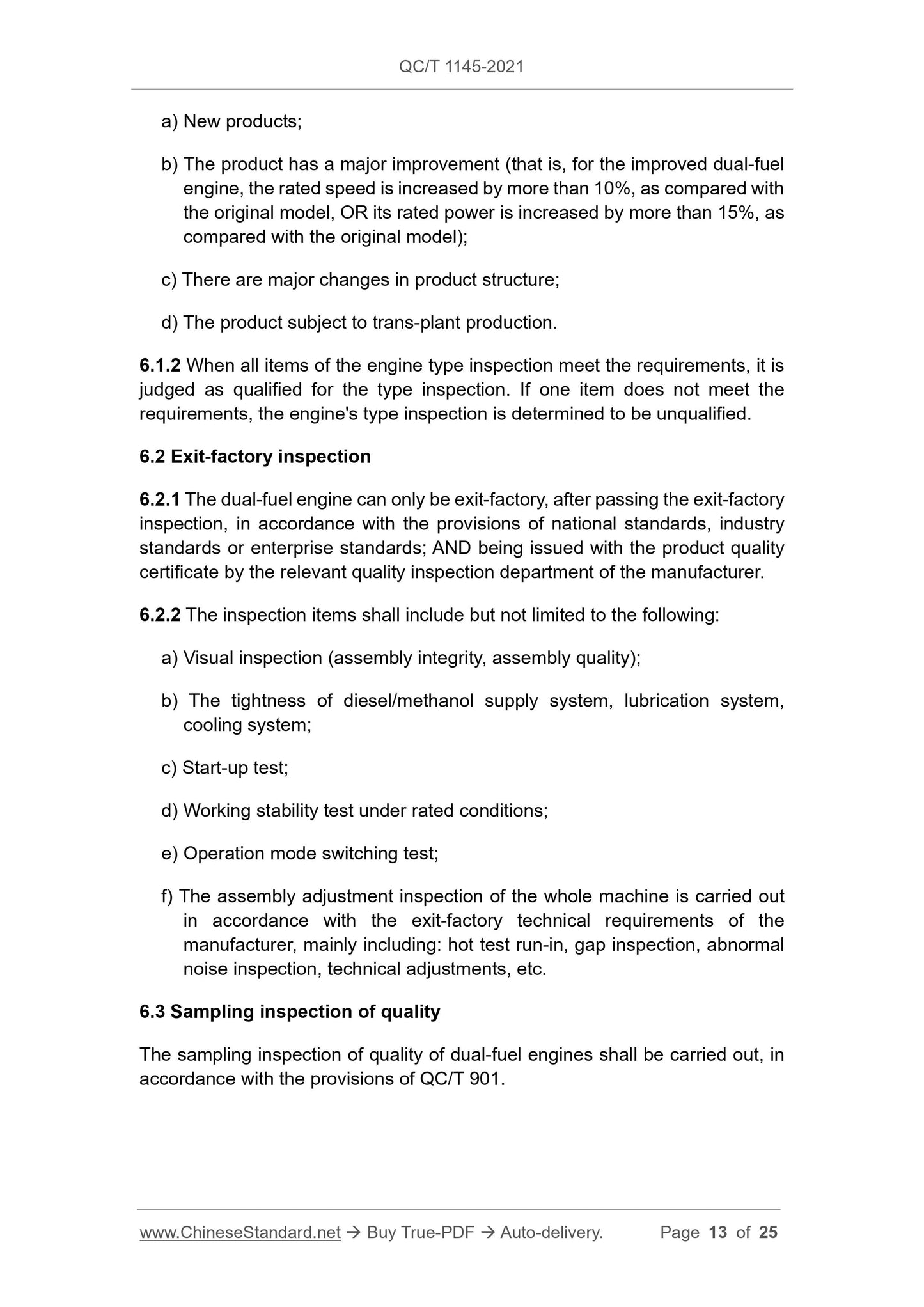1
/
of
7
www.ChineseStandard.us -- Field Test Asia Pte. Ltd.
QC/T 1145-2021 English PDF (QC/T1145-2021)
QC/T 1145-2021 English PDF (QC/T1145-2021)
Regular price
$290.00
Regular price
Sale price
$290.00
Unit price
/
per
Shipping calculated at checkout.
Couldn't load pickup availability
QC/T 1145-2021: Technical specifications of diesel/methanol dual-fuel engine
Delivery: 9 seconds. Download (and Email) true-PDF + Invoice.Get Quotation: Click QC/T 1145-2021 (Self-service in 1-minute)
Newer / historical versions: QC/T 1145-2021
Preview True-PDF
Scope
This document specifies the technical requirements, test methods, inspectionrules and markings, packaging, transportation, storage of diesel/methanol dual-
fuel engines.
This document applies to automotive diesel/methanol dual-fuel compression
ignition engines (hereinafter referred to as dual-fuel engines).
Basic Data
| Standard ID | QC/T 1145-2021 (QC/T1145-2021) |
| Description (Translated English) | Technical specifications of diesel/methanol dual-fuel engine |
| Sector / Industry | Automobile and Vehicle Industry Standard (Recommended) |
| Classification of Chinese Standard | T10 |
| Word Count Estimation | 18,124 |
| Issuing agency(ies) | Ministry of Industry and Information Technology |
Share
